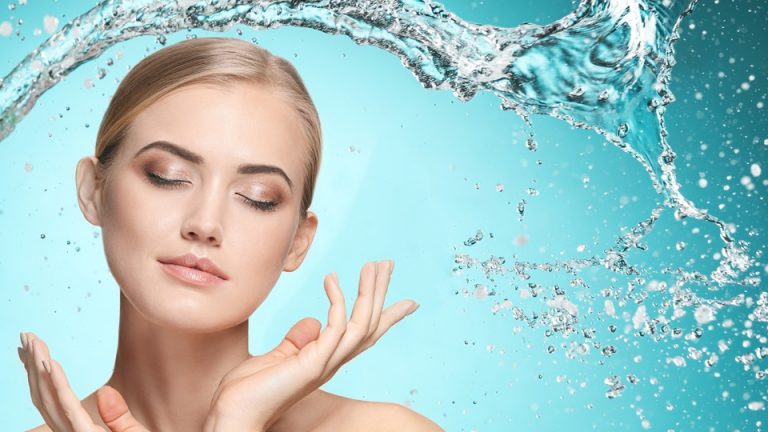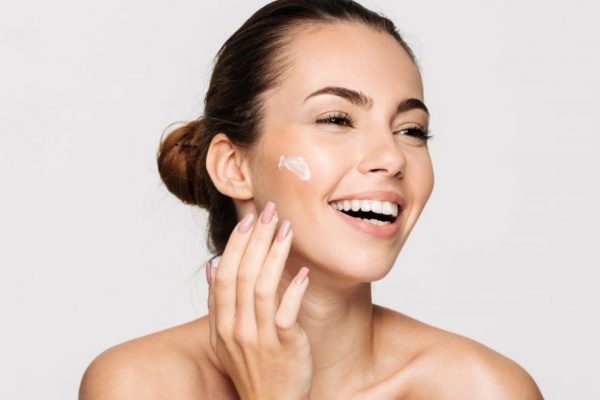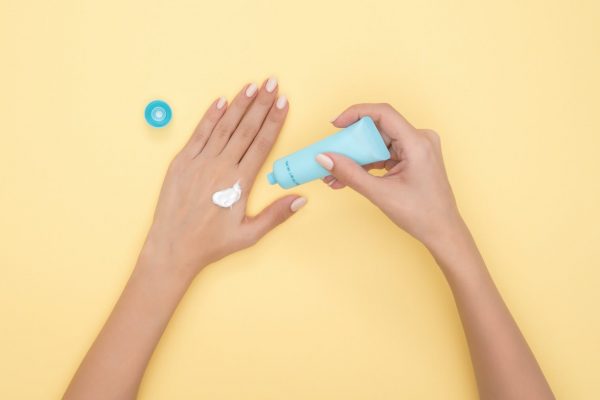Moisturising and nourishing your skin is the top priority for a dry skin facial routine. Your skin is missing the natural oils that your skin produces naturally and the water necessary for hydrated skin. Having a balance of oil and water in the skin is very important for the skin’s natural barrier to work properly and protect the skin from external aggressions such as fungi, bacteria, viruses, the sun, etc.
Do you know how to take care of your dry skin in a few essential steps? Today we are going to tell you the essential steps and products that your dry skin needs to look radiant. They are a few simple steps that will not take more than 5 minutes of your time and will allow you to show off clean, hydrated and protected skin.
Some Tips before we start
A common mistake is often to confuse dry skin with dehydrated skin. Do you know that even oily skin can be dehydrated? Having dehydrated skin is a temporary state, you can have it dehydrated in winter but not in summer. Instead, dry skin is determined by the person’s genetics, just like oily skin or combination skin. People who have dehydrated skin only feel localised and punctual tightness and it is due to the loss of water. People who have dry skin are those who lack natural oils in the skin.
If we add lipids to dehydrated skin, it could be easier for the pores to become clogged, for pimples to form and for the unwanted shine to appear on the skin. On the other hand, if we only add hydration to dry skin, that is, we add water, it will feel an instant sensation of comfort, but throughout the day it will not retain the water it needs and therefore the skin’s protective barrier will be affected. Therefore, you must know if your skin is exactly dry.
Steps to take care of your dry skin includes:-

Step 1- Facial Cleansing With Oil-based Cleanser
The oil-based facial cleanser is a beauty product that is recommended for all skin types, even oily skin. This type of cleanser is very effective at removing excess sebum that we have produced during the day, as well as the contamination accumulated on our skin and the remains of products that we have used, especially sunscreen and makeup.
The oil-based facial cleanser is a perfect product for removing make-up, even in the lip and eye area. Undoubtedly, a great advantage to eliminating make-up removal products from the routine, is that they are also less aggressive, they are usually soft and moisturising.
Dry skin does not have much visible pore presence, but the oil-based cleanser will greatly improve the cleanliness and appearance of the pores.
Step 2- Facial Cleansing With Water-based Cleanser
The second step of facial cleansing corresponds to the water-based facial cleanser. It is responsible for removing water-based impurities from the skin (for example, sweat). The most important thing about a cleansing gel is that it is not aggressive to the skin, that it does not contain alcohol and that it has a low pH.
Step 3 – Exfoliation
Cleaning is a key point in a routine, but the step that you should not forget in your facial routine for dry skin is exfoliation, which is responsible for removing dead cells on the surface of the skin and cleaning the pores and improving its appearance.
However, this step is done on an occasional basis during the week, since if it were applied every day you could over-exfoliate the skin. The health of your skin would suffer since you would notice your skin tighter, itchy, shiny and much more sensitive. In other words, the protective layer of the skin’s surface could be damaged and this must be avoided since it is the layer that protects our skin from fungi, viruses, bacteria and external agents.
Thanks to exfoliation, you will also improve the tone of your skin, since by removing the dead cells accumulated on the surface, your skin will obtain greater luminosity, it will be smoother (skin that does not exfoliate tends to have a fuller appearance).
The most suitable exfoliant in a facial routine for dry skin is the one that contains chemical exfoliants of the AHA type (alpha-hydroxy acids). This type of exfoliant is much more suitable for dry skin than a physical exfoliant (with which a kind of mask with micro granules is applied to the skin that is left to act on the skin and then removed with water).
Step 4 – Use Tonic
The toner is a very important beauty product in the facial routine for dry skin because it helps balance the pH of the skin after performing the double cleansing and is also responsible for hydrating it. A toner will leave your skin perfect after cleansing. You will notice how your skin is much fresher, softer and very hydrated.
Step 5 – Use Moisturising Cream
Since you have dry skin, you should include in your dry skin facial routine a cream that deeply nourishes your skin, with more oil than water content. The cream will be somewhat thicker than a moisturising lotion (which is more recommended for oily skin).
Step 6 – Apply Sunscreen Regularly
And the last step in your facial routine for dry skin is the use of sunscreen. It should be used every day of the year, regardless of whether it is sunny or not, whether we are going to spend more or less time away from home or the office, etc. Sunscreen is the greatest anti-ageing remedy. Even if you apply endless creams and products in your routine, or even use the most expensive ones, it won’t do you any good if you don’t incorporate sunscreen into your skincare.
Some tips for choosing your sunscreen are as follows:
- High SPF value (Sun Protection Factor, related to the degree of protection against UVB sun rays). The minimum recommended SPF value is 30
- High PA value (degree of protection against UVA rays, that is, the degree of protection against ultraviolet rays). The recommended value is PA with four ++++ symbols, which is the highest.
You should use sunscreen every day of the week. And remember, you should apply it about 10 or 15 minutes before going outside.
Test before you use it
Every time you incorporate a new product into your routine, it’s important to do a test run, applying the product behind your ear or to the skin on your wrist, to see how your skin reacts. Likewise, you should not incorporate all the new products at the same time, because if one of them does not suit your skin, you will not know which one is problematic.



